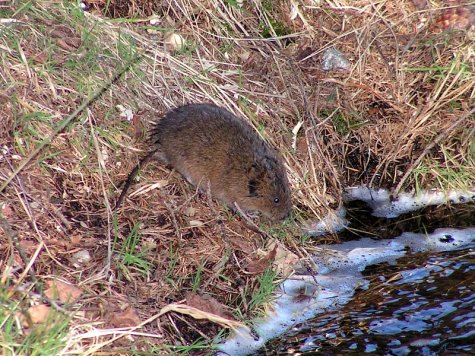Water vole devastation can be seen
Photo: (CC) Rabensteiner / Wikimedia
Translation: Liis
Northern water vole; European water vole Mügri or vesirott Arvicola amphibius, former name A. terrestris
The water vole is quite common in Estonia and even more common in the islands, the islets and in West Estonia both in coastal meadows and juniper thickets. On the mainland they inhabit even bogs and marshes but always close to water. The species is the only representative of the hamster, Cricetidae, family, and has no relationship with rats
When snow cover arrives they go on working under the white blanket. Such mild winters suit the water voles. In this season they often move a little away from water into drier habitats, if they for instance have not managed to collect sufficient winter stores in the summer living space. The latest family members, having seen the light of the day in October, are already fully grown now. Often they find their way to seaside country houses or farmsteads, and then quite a lot of mischief can happen – bulbs from flower beds are devoured, the bark as well as roots of fruit trees is chewed, whereupon young fruit trees may dry in the next season or even tip over in a wind because there is no longer any root system to hold up the tree. Another place where they move to is fields.
The piles of this soil worker are not as regular as mole hills, and the entrance opening in not in the centre of the heap but on the side – always possible to find out who the mischief-maker really is.
A water vole is 12 to 25 centimetres long, weight a hundred or a few hundred grams, sometimes even more. The fur coat is shiny, blackish on the back, brown on the sides, tail up to two thirds of the body length, with short, bristling hairs. Nose is blunt as suits a soil digger, eyes small, and above ground it becomes active only in dusk.
Luckily for us these easily multiplying rodents have many enemies: among mammals foxes and raccoon dogs, stoat, ferret, mink, and domestic cats like to hunt them too. And owls hunt them, as do ravens and crows.









